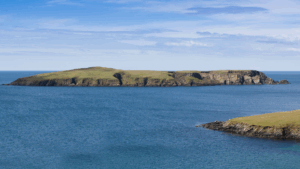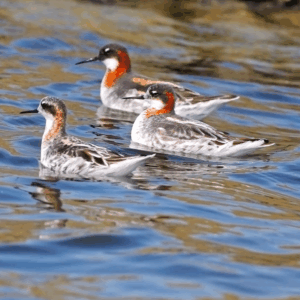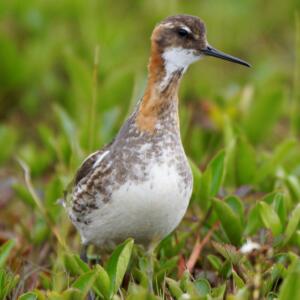
Grants
Conserving Red-necked phalaropes
£30,000 awarded
Grantee: RSPB Scotland
Duration: March 2025 – December 2026
This project is funded through Seacology (see here).
Background
Red-necked phalaropes are one of the UK’s rarest breeding birds. Every year, this tiny wading bird makes an incredible 16,000 mile-long migratory journey from coastal Peru to the UK and back.
Fetlar Island, Shetland, is one of a handful of places in Scotland where they are found. In fact, the island hosts around 80% of the UK’s breeding population. However, lack of appropriate grazing and succession of wetland areas, threatens key breeding sites, posing real threats to the species’ population.
The Project
The Royal Society for the Protection of Birds (RSPB) manage various sites in the Fetlar Nature Reserve suite, in order to protect Red-necked phalaropes and other rare breeding birds such as Curlew, Lapwing, Snipe, and Redshank.
Over two years, they are aiming to improve the Mires of Funzie site through a range of interventions, such as removal of vegetation, creating pools and removing overgrowth and silt from existing pools.
A ‘conservation grazing programme’ aims to replicate the effect of ancient grazers through selective cattle grazing and trampling during autumn and winter. This will create the necessary variation in vegetation height and density favoured by phalaropes and other wading birds. The approach will be in partnership with local crofters and graziers, financially assisting them to manage the habitat for birds.
These activities will dramatically improve habitats, leaving a lasting impact on Red-necked phalaropes populations. The benefits will also extend socially and economically, by attracting visitors to one of the few sites in the UK where this striking, enigmatic and vulnerable wading bird can be seen.


